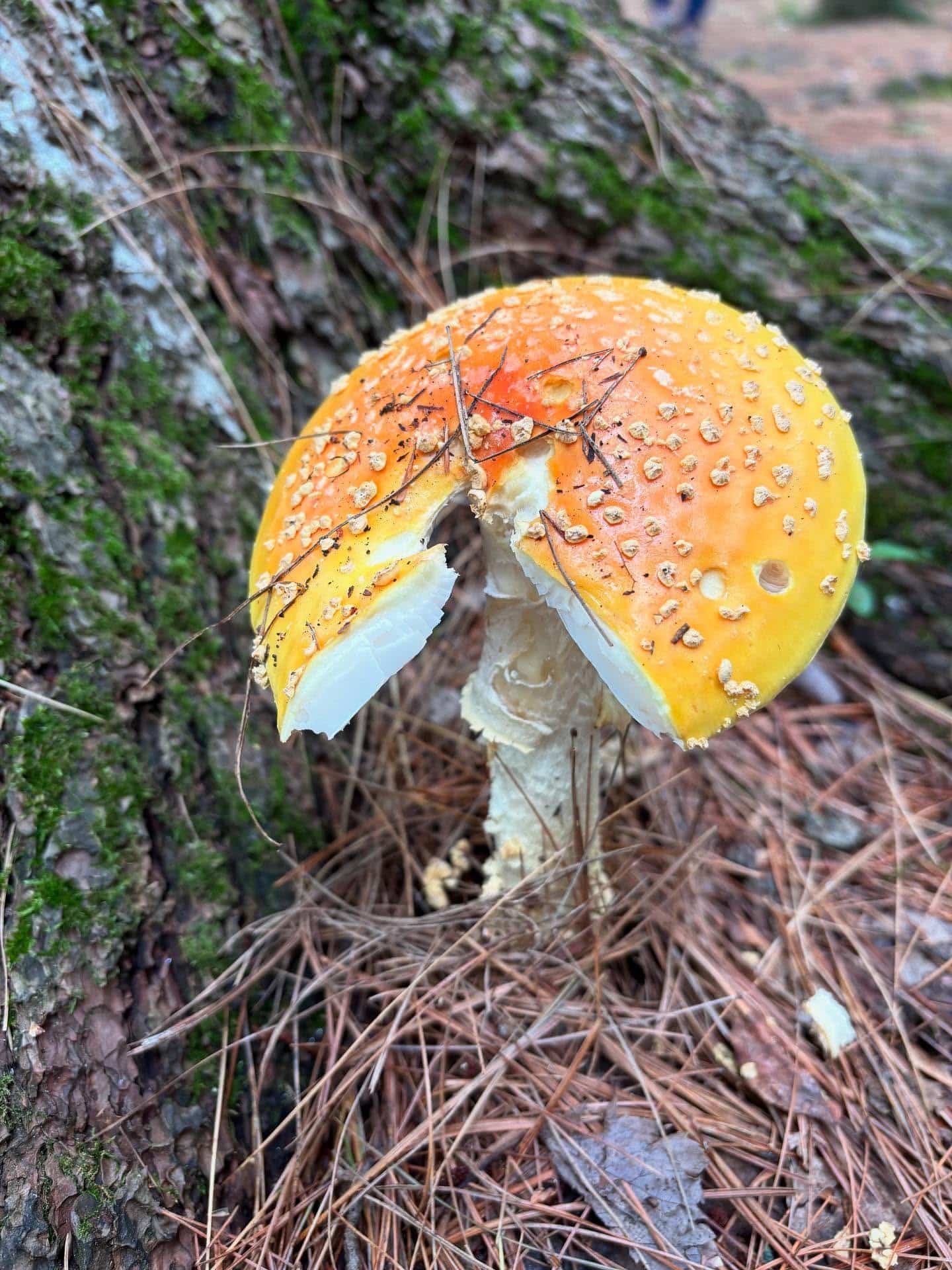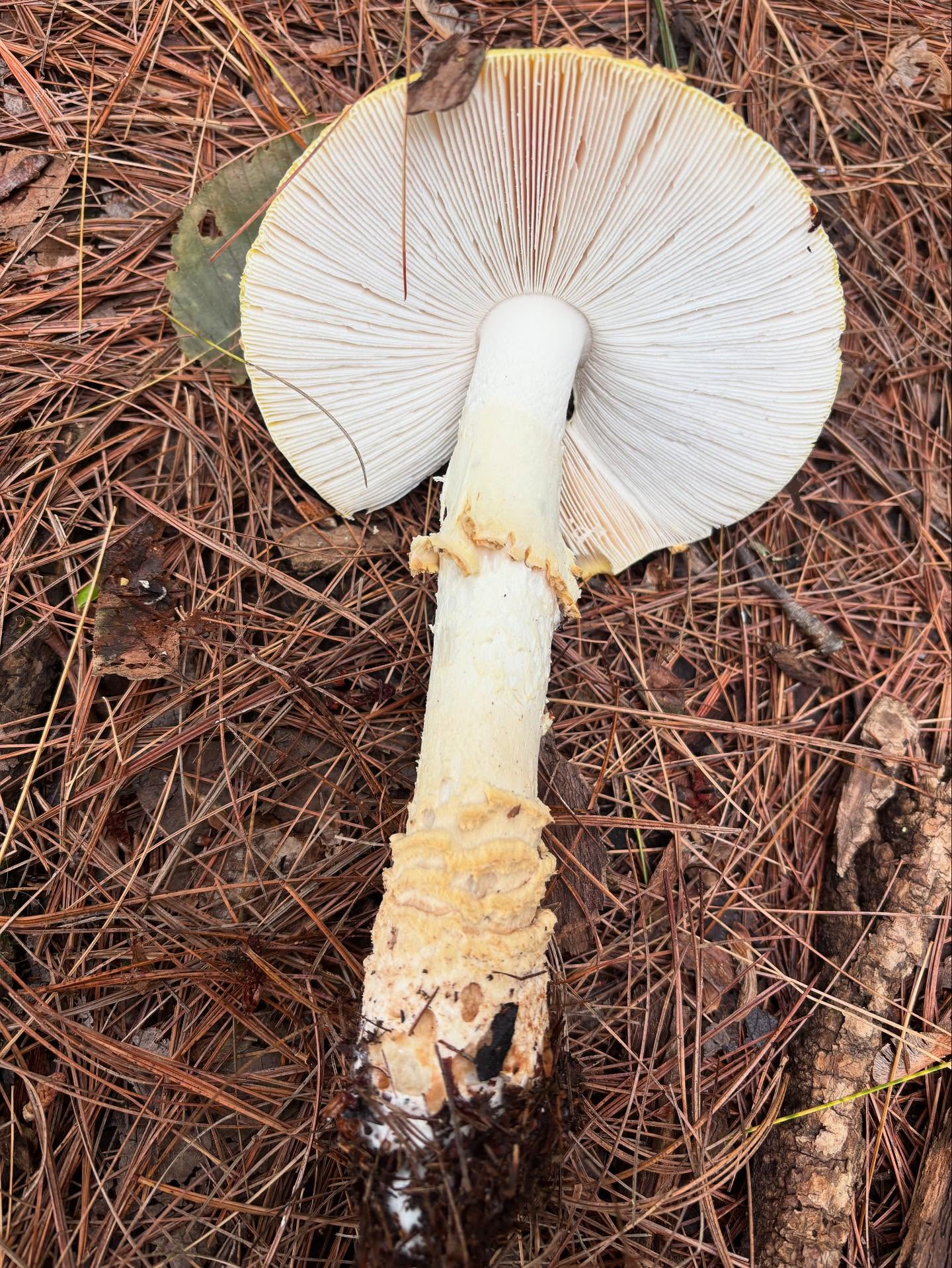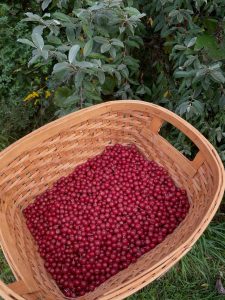Page Created by Connecticut Foraging Club
Upcoming Events | Meet the Instructors | Plant Archive | Mushroom Archive
----------------
Upcoming Events | Meet the Instructors | Plant Archive | Mushroom Archive
----------------
The American Fly Agaric, yellow-orange variant (Amanita chrysoblema) is toxic, psychoactive, or edible depending on preparation. It fruits often in the fall and occasionally in the spring.

This species was previously called Amanita muscaria var. guessowii.
The American fly agaric is often found growing mycorrhizally with conifers but can also associate with deciduous trees.

The mushroom has a yellow-orange cap with cream-colored warts from the volva. The cap is nearly round at first, flattening with age. Stem is white to pale yellow and has a ring on the upper portion. The bottom of the stem has fuzzy concentric zones above the bulbous base.
The mushroom contains ibotenic acid and muscimol which can cause nausea, vomiting, and seizures if consumed raw.

The American Fly Agaric has been dried and boiled into a tea for spiritual purposes. It has also been used medicinally to relieve stress and promote sleep.
Amanita muscaria has been traditionally boiled, fermented, and then consumed in miso soup in Japan.
To render the mushroom edible, the American fly agaric must be boiled for at least 15 minutes to remove the water-soluble toxins.
The American fly agaric must be differentiated from other Amanita species, some of which are deadly toxic.
--
Written by Amy Demers, founder of the Connecticut Foraging Club. To learn more about foraging in Connecticut, check out our upcoming classes.






